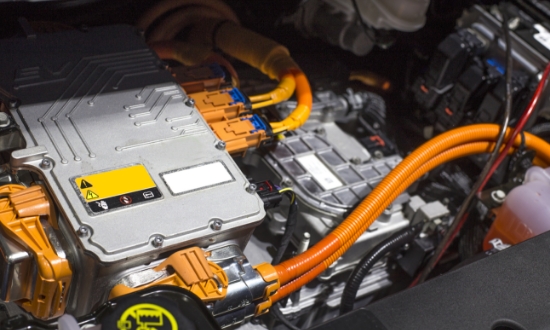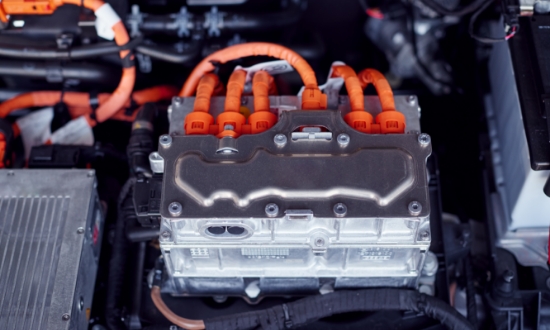- Home
- Industries
- Automotive Parts
Automotive Parts

World’s Fifth Biggest Producer of
Finished Vehicles and
Competitive Automotive Parts Industry
Korea’s automotive industry, ranking fifth in the world and boasting an annual production capacity of more than 4 million vehicles, is rapidly responding to paradigm shifts such as electrification, autonomous driving, and mobility services. In particular, the auto industry is quickly incorporating batteries, IT and other technologies and enjoying strong growth.
Competitive Automotive Parts IndustryIn 2024, nine Korean auto parts companies were ranked among the world's top 100 automotive parts suppliers by sales. These companies recorded a combined sales revenue of USD 75.37 billion, representing 6% of the total sales among the top 100 suppliers.
Automobile Industry
Leading the Korean Economy
accounting for 13.2% of total exports, 14% of GDP contribution, 12% of the manufacturing sector,
and 7% of total employment.
-
A Global Export Powerhouse
In 2024, South Korea ranked 5th globally in finished vehicle exports with a total export value of USD 70.8 billion, while also achieving 6th place in automotive parts exports with USD 35 billion. The Korean automotive industry is witnessing strong growth in high-value-added vehicle models, particularly eco-friendly vehicles and SUVs. Furthermore, the industry is expanding beyond traditional markets such as the United States and Europe to emerging markets across Asia, the Middle East, Africa, and South America. Additionally, the scale of dedicated electric vehicle (EV) production facilities-including Hyundai’s Ulsan plant and Kia’s Hwaseong plant-continues to expand, reinforcing Korea’s position as a leader in the global EV market.
-
Government Strengthening
Support to Maintain
CompetitivenessThe Korean government's policies for future vehicles are not limited to autonomous vehicles and EVs, but are expanding the scale from existing manufacturing to services such as connected cars, autonomous driving, and car sharing.
-
Production Facilities
Expansion and Regional
Specialization StrategiesThe Korean automotive industry is relatively evenly dispersed across the country and can be divided into three clusters of the West Coast cluster covering the Seoul metropolitan area, the Southeast cluster led by Ulsan, and the Honam cluster including Gwangju and Gunsan.
Investment Success Stories

[Company W]

Germany-based Company W is a global leader in automotive roof systems, holding a dominant market position and advanced technology in the sector. As part of its strategy to adapt to the transition to future mobility, the company selected South Korea as the location for its first-ever electric vehicle (EV) battery pack manufacturing facility among all its global sites.
To this end, Company W completed the construction of its first plant in Dangjin, Chungcheongnam-do, in May 2022, followed by the completion of its second plant in May 2024, establishing an annual production capacity of 200,000 EV battery packs. Additionally, the company has significantly increased the localization rate of its components to 98.5%, positively impacting Korea’s tier-2 and tier-3 suppliers as well as the broader domestic automotive industry.

[Company B]

Company B, a comprehensive U.S.-based automotive parts manufacturer, is a global leader in internal combustion engine powertrain technology with a high market share worldwide. To drive its expansion into future mobility, Company B opened an electrified propulsion motor R&D center in Daegu in 2024 to strengthen its presence in Korea’s battery electric vehicle (BEV) and hybrid electric vehicle (HEV) motor markets.
The company cited Korea’s advanced technological capabilities and growing EV demand as key reasons for its investment decision. Furthermore, both the central and local governments provided strong support for the project, reinforcing Korea’s attractiveness as an investment destination for future mobility technologies.

Sanghun Lee
Key Industries Promotion TeamRecommendation on Locations

Industrial Complex Information
Myeongcheon Automobile Complex
| Initial designation date | 2003.07.21 |
|---|---|
| Designated area(m2) | 142,673 |
| Management | Chungcheongnam-do Seosan City |
| Nearby Railway | Hongseong Station |
| Distance from station(km) | 50 |
| Nearby Airport | Gunsan Airport |
| Distance from airport(km) | 124 |
| Industrial waterSupply capacity(ton/day) | 254(㎥/day) |
| Affiliation local government | Chungcheongnam-do Seosan City |
| Population | 175,272 |

Industrial Complex Information
Pyeong-dong (Woljeon Small and Medium-sized Business Cooperation for Foreigners)
| Initial designation date | 2013.05.15 |
|---|---|
| Designated area(m2) | 99,060 |
| Management | Korea Industrial Complex Corporation |
| Nearby Railway | Gwangju Station |
| Distance from station(km) | 21 |
| Nearby Airport | Gwangju Airport |
| Distance from airport(km) | 7 |
| Industrial water Supply capacity(ton/day) | - |
| Affiliation local government | Gwangju Metropolitan City Gwangsan-gu |
| Population | 1,454,154 |

Industrial Complex Information
Seosan Auto Valley General Industrial Complex [formerly: Seosan
| Initial designation date | 1997.01.24 |
|---|---|
| Designated area(m2) | 3,989,547 |
| Management | Chungcheongnam-do Seosan City |
| Nearby Railway | Sapgyo Station |
| Distance from station(km) | 49 |
| Nearby Airport | Cheongju International Airport |
| Distance from airport(km) | 123 |
| Industrial water Supply capacity(ton/day) | 7,432(㎥/day) |
| Affiliation local government | Chungcheongnam-do Seosan City |
| Population | 175,272 |

Industrial Complex Information
Dalcheon Agricultural Industrial Complex
| Initial designation date | 1997.03.11 |
|---|---|
| Designated area(m2) | 259,634 |
| Management | Ulsan Metropolitan City Buk-gu |
| Nearby Railway | Hogye Station |
| Distance from station(km) | 4 |
| Nearby Airport | Ulsan Airport |
| Distance from airport(km) | 8 |
| Industrial water Supply capacity(ton/day) | - |
| Affiliation local government | Ulsan Metropolitan City Buk-gu |
| Population | 1,140,310 |

Industrial Complex Information
Wonju Automobile Component General Industrial Complex
| Initial designation date | 2008.07.10 |
|---|---|
| Designated area(m2) | 92,917 |
| Management | Gangwon-do Wonju City |
| Nearby Railway | Donghwa Station |
| Distance from station(km) | 5 |
| Nearby Airport | Wonju Airport |
| Distance from airport(km) | 25 |
| Industrial water Supply capacity(ton/day) | - |
| Affiliation local government | Gangwon-do Wonju City |
| Population | 352,964 |

Industrial Complex Information
Wanju Techno Valley General Industrial Complex
| Initial designation date | 2010.12.31 |
|---|---|
| Designated area(m2) | 1,311,399 |
| Management | Jeollabuk-do Wanju County |
| Nearby Railway | Samrye Station |
| Distance from station(km) | 11 |
| Nearby Airport | Gunsan Airport |
| Distance from airport(km) | 62 |
| Industrial water Supply capacity(ton/day) | 4,792(㎥/day) |
| Affiliation local government | Jeollabuk-do Wanju County |
| Population | 91,741 |











 +82-2-3460-7514
+82-2-3460-7514
 sanghun@kotra.or.kr
sanghun@kotra.or.kr